Last Thursday we had the meeting with the Presbyteral Council. It is always edifying to hear the input of the priests of our archdiocese, and we had very good conversations on a number of issues.
Also during our gathering we had a presentation by Father Bryan Hehir, our Cabinet Secretary for Social Services, regarding developments with the Department of Health and Human Services contraception mandate and also from our Cabinet Secretary for Faith Formation, Janet Benestad, on the issue of physician assisted suicide. We wanted our priests to be informed about these two very important and pressing issues so that they could, in turn, inform their people.
– – –
On Friday, I visited MCI Cedar Junction, the state’s maximum security prison.
As I often do, before meeting with the inmates, I met with the staff.

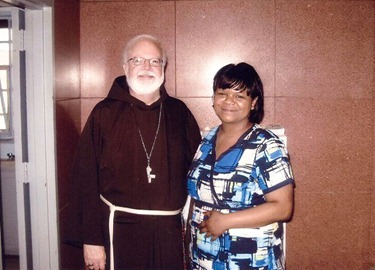
They spoke about the sort of work they do. For example, for a few years they have been doing placements, which means they receive all new male prisoners and then evaluate them for which facility best could house them. 
The superintendent, James Saba, was very gracious during our visit. He is the cousin of Father John Murray, who is a classmate of one of my priest secretaries, Father Bob Kickham. So it was nice to make that connection.
We also received a tour of the facility. They even showed us the factory where the men make license plates.
We were commenting on the Chapel, which unfortunately we could not take a picture of (for understandable reasons), that was built in the 50s, with a permanent altar beautiful tabernacle and a full sacristy and altar rail. It is not the sort of Chapel you see in every prison.
Then we met with the prisoners, and I was also very pleased to be able to go visit the men in isolation. And then we celebrated Mass with the men.
The chaplain there, Ruth Raichle, is doing a wonderful job and has many helpful and devoted volunteers.
– – –
That evening, I visited Redemptorist Mater Archdiocesan Missionary Seminary in Brookline. 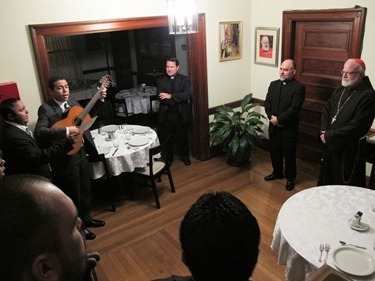
I was very happy to be able to join them for Vespers and dinner and to spend some time with the seminarians.
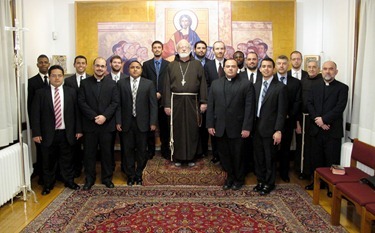


After dinner, we spent the evening together watching a Russian film called "The Island." It tells the story of a man named Anatoly, who was a soldier during World War II who later becomes a Russian Orthodox monk and spends his life seeking God’s forgiveness for his actions during the war.
It is a very enjoyable and inspiring film, and very appropriate for Lent.
– – –
On Saturday we went to Tyngsborough for the dedication of the new altar and church of St. Mary Magdalen. Father Ron St. Pierre is the pastor there and oversaw the building of the new church. The original parish church, just a couple of miles away over the town line in Dracut, was built over 50 years ago as a chapel for summer visitors, so this new building provides them with much more room.
Those who know the parish, know they have a beautiful parish center with classrooms and meeting rooms in the first floor, which is ground level. But, as Father St. Pierre said, a parishioner very wisely suggested that when they constructed it they build the foundation in such a manner that a church could be placed on top.
So the new church, which is now on the second floor, is just full of light and looks very grand with lots of wood.

They used wood from the pews of the old church when they built the new baptismal font, altar and ambo.

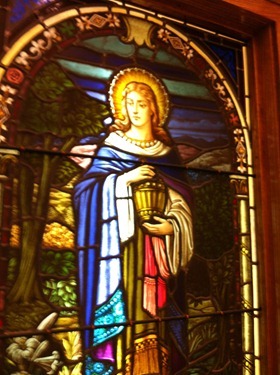
I was also very pleased to see that they used a number of item from closed churches including the beautiful pews from St. Catherine’s Church in Charlestown and the stations of the cross from Blessed Sacrament Church in Jamaica Plain.
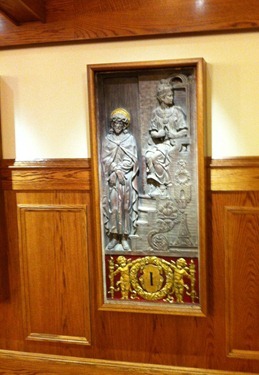

– – –
Saturday morning I joined the deacons of our archdiocese for Mass and lunch during their annual convocation, which was held here at the Pastoral Center.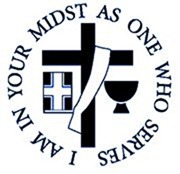
The deacons have an extraordinary choir and music program, as I always say, good enough that he would want to record it and make a CD. But perhaps the highlight of the Mass was the moment when all the deacons renewed their vows of the diaconate.
I used to run a diaconate program myself in Washington and, in every diocese I have been in, I have seen the extraordinary work that deacons do in our parishes. The ministry of the deacon is so important in the archdiocese that we have recently expanded the program so that there is a new class of deacons ordained each year.
As with the priests, the deacons received an update on the HHS regulations delivered by Janet Benestad and our Chief Healthcare Ethicist, Peter Cataldo.
– – –
On Sunday I joined the Catholic student community at MIT for mass. It is a wonderful campus ministry and the FOCUS ministers are doing such wonderful work there assisting the campus chaplain, Father Richard Clancy.
The Chapel is a beautiful structure architecturally. The students always have extraordinary music program, with violins and cellos, some of them are even music majors.
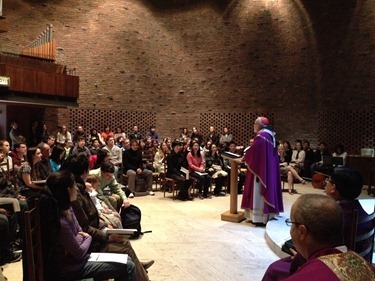
Afterwards we gathered with students for coffee and conversation. It is always wonderful to have this opportunity to be together with these young Catholics who are the future of our church.

– – –
And then, on Sunday afternoon, I attended the Anti-Defamation League’s "A Nation of Immigrants Community Seder" held at UMass Boston.
My understanding is that this annual tradition has its roots in the Seder meal started many years ago by Lenny Zakim with the Black community. And later on he also organized a Catholic – Jewish Seder.
This Seder grows out of that tradition, and is focused on building connections with all those who have experienced the journey from bondage into freedom, from oppression to dignity.


Rabbi Elaine Zecher and Cantor Roy Einhorn from Temple Israel in Boston lead us through the program explaining the steps of the Seder meal. There were also performances of a Chinese Lion Dance by the Gund Kwok Dance Troupe, and secular and religious songs from the Boston Children’s Chorus.
Throughout the Seder, guest speakers, community leaders and guests talked about their experiences in this nation of immigrants.
I spoke about my own experience of the first time I attended a Seder meal. It was organized by Rabbi Leon Klenicki, and Argentine Rabbi who was a very good friend of mine.

I also said how particularly important it is for Catholics to understand how the Eucharist is inserted in salvation history, its connection to Israel’s exodus from Egypt and Jesus’s celebration of the Last Supper.
– – –
That evening I headed down to Washington for several days of USCCB administrative meetings. We had meetings with the committees of clergy, consecrated life, vocations and pro-life as well as the administrative session.
Since Cardinal DiNardo, who is the chairman of the Pro-Life Committee, is presently making his ad limina visit, as incoming chairman of that committee I was asked to lead that meeting. At the end of the meeting, we had an interesting presentation by the working group on the dignity of the human person. It featured interviews with priests focusing around the Church’s pro-life and social gospel teachings and how they are received (and sometimes misperceived) and the ways we can best communicate them.
Obviously, the new HHS regulations were very central to many of the discussions and conversations among the bishops. At the close of our meeting, the Administrative Committee also issued a very informative document on the issue of the HHS mandate.
I am also pleased that Bishop Lori’s Ad Hoc Committee on Religious Liberty will soon issue a document on the issue the broader issue of religious liberty.
– – –
I returned to Boston on Wednesday and was very happy to be visited that day by Father Malcolm Dyer, the provincial of the Don Orione Fathers, who was visiting from Rome. He was accompanied by Father Miroslaw Kowalczyk, the pastor at St. Joseph – St. Lazarus Church in East Boston.
Since Father Malcolm happened to be in Boston they thought they would come and give an update on some the work of the Don Orione Fathers here in the archdiocese and elsewhere. It was a pleasure to see him.
– – –
Then yesterday, just as we met with superiors of the women’s religious communities last week, I also met with the superiors of the men’s communities.

Once again, Sister Marian Batho did such a wonderful job coordinating and organizing the gathering.

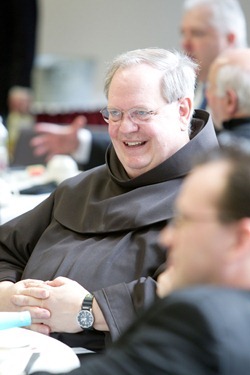




I joined them for prayer and lunch, followed by a presentation by Father David Couturier on the very important issue of pastoral planning.

The day also gave me a chance to express to them how very grateful we are for their orders’ presence here in our archdiocese.
Their various spiritualties and charisms enrich us all and are such a valuable contribution to the work of the Church here.
– – –
And, of course we couldn’t finish this week’s post without a mention of St. Patrick’s Day!
While in Washington this week, I visited the shrine of Mary Queen of Ireland Basilica Shrine of the Immaculate Conception.
There are two inscriptions in the chapel that I thought would be very appropriate as we prepare to celebrate this St. Patrick’s Day.
The first is a quote from St. Columban: "For all we Irish living on the world’s rim are disciples of Saints Peter and Paul"
Likewise the following medieval Irish prayer to our Lady is on the wall:
Holy Mary, if thou wilt, hear thy suppliant;
I put myself under the shelter of thy shield.
When falling in the slippery path,
thou art my smooth supporting hand staff.
There is no hound in fleetness or in chase,
north wind or rapid river,
as quick as the Mother of Christ to the bed of death,
to those who are entitled to her kindly protection.
Amen.
I wish you all a happy and blessed St. Patrick’s Day,
Cardinal Seán
